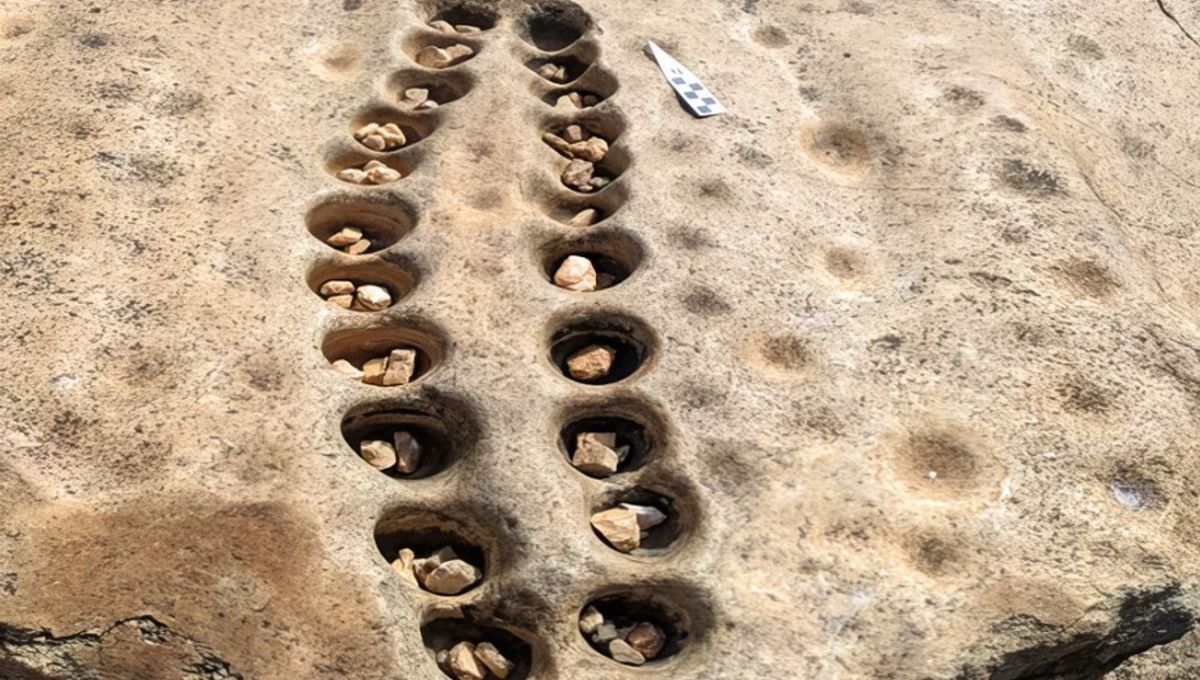
A row of about 20 Mancala game boards has been discovered in a Kenyan wildlife conservancy, suggesting local herders may have whittled their days away playing the popular strategy game thousands of years ago. The boards were found carved into a rock ledge, and while it’s impossible to determine their age, researchers say the discovery transforms our understanding of ancient life in East Africa.
“People tend to look at early life as brutish, nasty, and short,” explained Yale archaeologist Veronica Waweru in a statement. “But perhaps life was not all about survival,” she adds, referring to the apparent popularity of Mancala back in the day.
Still played across the world today, Mancala is a two-player strategy game in which participants attempt to capture as many of their opponent’s pieces as they can. The oldest known playing boards were found in a Neolithic dwelling in Jordan and have been dated to between 7,500 and 8,000 years ago.
It’s thought that the game was later introduced to East Africa by Arabian traders, with Mancala boards from around 700 CE having been identified in Eritrea and Ethiopia.
Waweru came across the row of game boards while visiting a site known for its prehistoric hand axes in the Lewa Wildlife Conservancy. Nearby, archaeologists had previously discovered an ancient burial complex consisting of 19 stone cairns.
Noticing a row of shallow pits carved into the rock, Waweru recognized that the indents were deep enough to hold a handful of stones and were a suitable shape and size for playing Mancala. “It’s a valley full of these game boards, like an ancient arcade,” she says.
“Given the erosion of some of the boards, I believe people were playing these games there a very long time ago,” continues Waweru. However, because the rock into which the boards were carved is around 400 million years old, it’s not possible to say with any certainty how long ago the pits were made.
What’s clear, though, is that some of the boards were touch-up or re-dug over time, suggesting that they were in use across a long period. “Was there some ritual going on there on a regular basis over long periods of time?” Waweru ponders.
Despite a lack of solid evidence regarding the identity of the ancient Mancala players, Waweru speculates that the game boards were probably used by shepherds in the distant past. “Modern people in the region tend to play games like Mancala when they are out herding,” she notes. “That’s probably what they were doing here.”
The first herding societies appeared in the region around 5,000 years ago, so the boards could potentially have been carved at any time since then.
Overall, life for these prehistoric pastoralists appears to have been rather pleasant, with evidence suggesting that when they weren’t gaming, they enjoyed dining on grilled meat. According to Waweru, marks found on nearby rocks indicate that they were used for sharpening metal knives.
“If they are sharpening knives there, they are probably feasting and performing butchery and barbecuing,” she said.
Source Link: "Arcade" Of Ancient Gaming Boards Discovered In Kenya